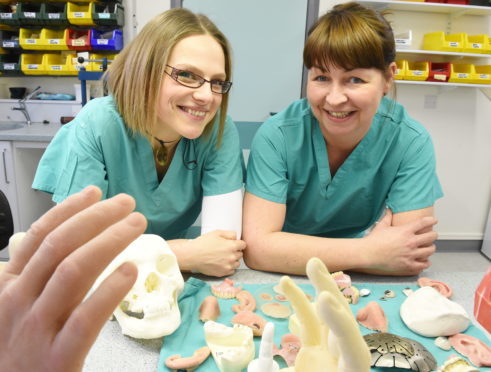Ears, noses and eyeballs are facial features most of us take for granted.
But for two women working at Aberdeen Royal Infirmary, their time on the job is taken up making replacement body parts to give patients a new lease of life.
Karen Boyd and Justyna Kruczynska are the only maxillofacial prosthetists in the north-east of Scotland and handle the majority of cases from Perth to Orkney.
The pair face increasing challenges – choosing which patients to prioritise, an ever-expanding waiting list, a lack of funding and a dearth of training places in Scotland.
In England there is a government funded training programme for the role but there is no equivalent in Scotland – meaning more opportunities exist south of the border and often offering higher pay.
Moulds of missing body parts are handmade from a variety of materials such as wax, silicone and acrylic and then individually painted by the skilled technicians.
They can then be attached to the body either with glue or other adhesives or by using titanium bars placed beneath the skin and then attaching the prosthetic by magnet.
While some moulds are relatively simple to make, others can take weeks to make sure they are perfect.
Ms Boyd said: “It is a very creative job, we make a lot of moulds we have never made before and a lot of it is trial and error to see what works for what patient.
“Everyone is different so every prosthetic needs to be handmade and suited to each indivual patient.
“But here it is only the two of us so there are problems when one of us is on holiday or ill.
“Generally trauma patients are prioritised and the waiting list is reviewed regularly. But it is hard to choose who is prioritised.”
However, technological change is fast approaching with the advent of 3D printing potentially revolutionising the field in the coming years.
Ms Kruczynska said: “While we are good technicians, obviously an exact mirror image of what we want to make would be far more natural.
“You will be able to print moulds in the future which would save a lot of time.”
Ms Kruczynska added: “The real beauty of our job is that if we have done it right then nobody will ever even know it is a prosthetic.”
